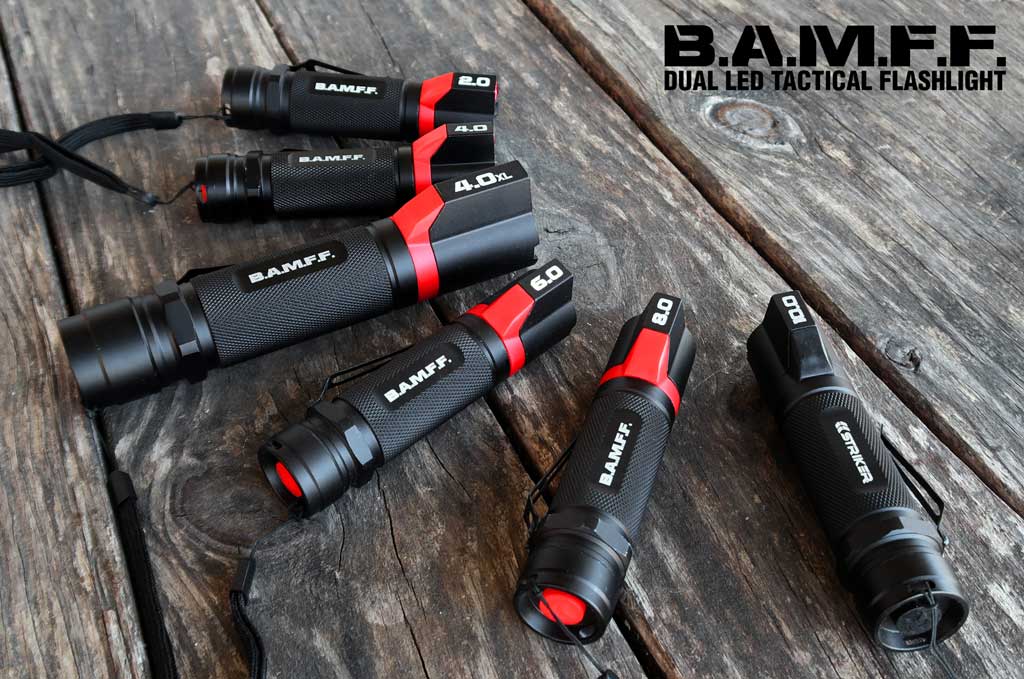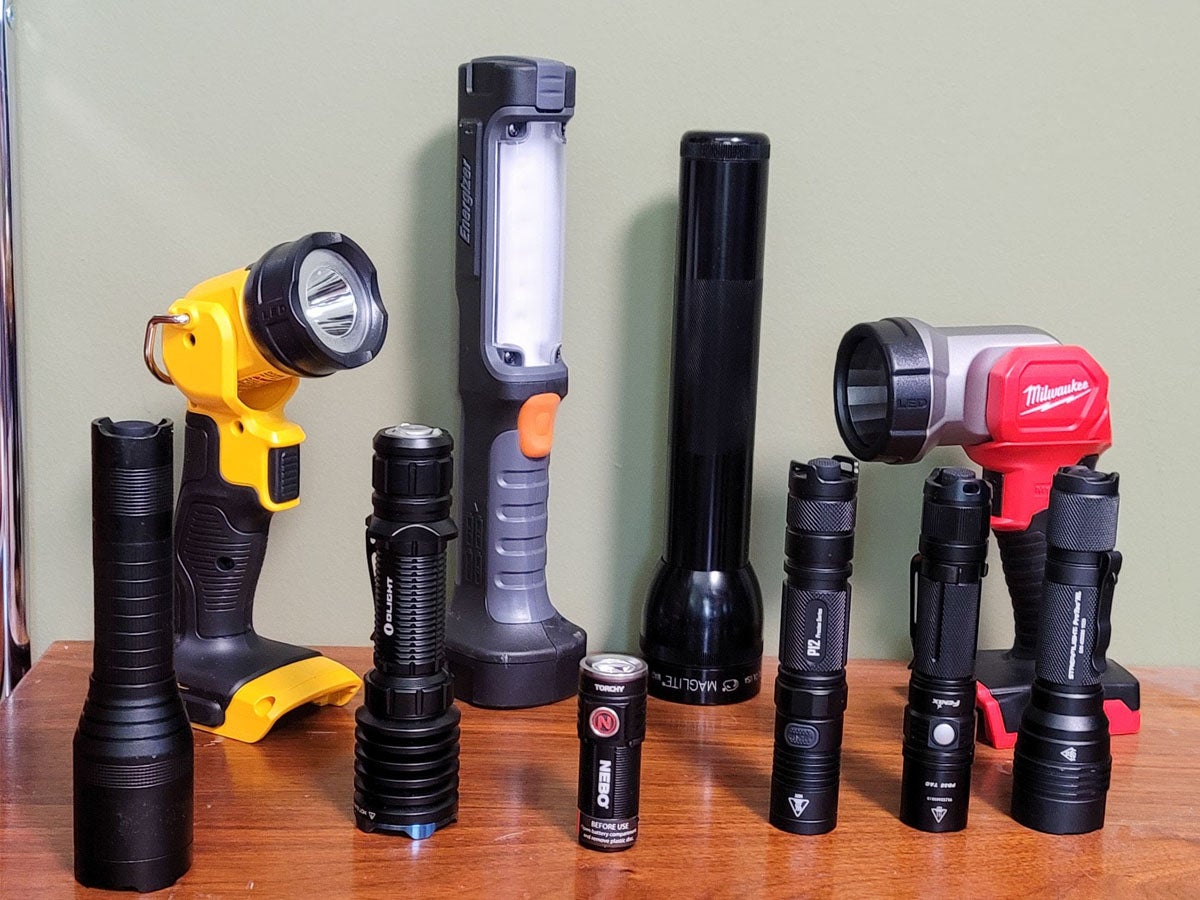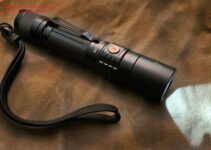Are you worried about facing a power outage? Fear not, as this guide provides all the information you need to know about flashlights for power outages.
From the importance of having a flashlight ready to different types of flashlights and batteries, you’ll learn what’s needed to make sure you stay safe and prepared in the case of an outage.
The power going out is usually a surprise and can be very inconvenient. Having the right flashlight for a power outage makes it far easier to get things done by providing reliable illumination. It’s important to understand the different types of flashlights and the features they offer so you can make an informed decision when buying one. Additionally, it’s necessary to consider other factors such as budget, portability, and battery life when shopping for a reliable flashlight that is suitable for emergency use.
This guide will outline the importance of having a flashlight prepared for power outages and provide helpful tips on choosing the right one. We will also discuss other considerations such as budget, rechargeable features, and portability that should be taken into account when selecting your flashlight. Finally, we will discuss the various types of flashlights available on the market today and recommend our top picks in each category. So read on to learn how to choose the perfect Flashlight For Power Outages!

Explanation of power outages
Power outages are disruptions to the normal flow of electricity that can be caused by issues such as weather, damaged power lines, incorrect power use and damaged equipment. These periods can last anywhere between a few minutes to several days, depending on the cause and location of the outage.
During a power outage, it is essential to be prepared with flashlights and other supplies. Flashlights can provide much-needed light when the lights go out, providing comfort in an otherwise dark situation and allowing you to navigate safely around your home and familiarize yourself with emergency exits.
In addition, flashlights are ideal for outdoor activities away from civilization or when camping in areas with limited access to electricity. They should form part of an emergency preparedness plan for any family or business.
Importance of flashlights during power outages

Power outages, such as those caused by extreme weather conditions, can last anywhere from a few hours to several days or longer. These outages can leave homes and businesses without electricity and many of the basic services and amenities that families, customers and employees rely on. Of the many appliances and tools that are suddenly rendered useless during a power outage, flashlights become one of the most important resources.
Flashlights provide light in situations where other sources do not work, making them invaluable during outages. In addition to providing guidance through dark areas with no street lights or electrical outlets active, flashlights allow individuals to carry out tasks like reading food labels on cans, finding keys or even applying a Band-Aid in low-light conditions. Furthermore, properly lighting the areas around the home ensures safety for anyone attempting to quickly exit during an emergency either due to smoke inhalation or fire damage, among other threats.
Having access to working flashlights before an emergency situation arises can make all the difference – it is always best to be prepared ahead of time rather than scrambling at the moment of need. While most homes have at least one flashlight sitting unused in a kitchen drawer somewhere, having multiple flashlights spread throughout each floor as well as securely stored backpacks near exits can go a long way when it comes time for their use.
Overview of the guide
This guide aims to provide insight into the importance of flashlights and lanterns for power outages. It will discuss the factors to consider when choosing a reliable source of light as well as present an overview of the different types of flashlights on the market today.
The guide also discusses the advantages and disadvantages of each type, helping readers find an appropriate solution for their needs. It offers tips on how to store and maintain flashlights and other illuminating devices in order to ensure optimal performance when one needs them most. In addition, it provides recommended models for different needs and budgets, making it easier for readers to select a flashlight that fulfills their requirements.
Finally, it reinforces the importance of being prepared with essential items such as flashlights during power outages.
Importance of flashlights during power outages

Electricity has become an essential part of everyday life, so much so that a power outage can feel like a sudden devastating event. From the simplest convenience to more serious medical and safety needs, having adequate lighting during a blackout is essential. Flashlights provide an efficient and reliable means of illumination in emergency situations when the power is out, whether in your home or while on the go. It’s important to know where they are, how they work, and what features should be considered before you purchase one.
Having a good flashlight or several flashlights available is an important part of any power outage preparedness plan or emergency kit. Knowing how to use the light source efficiently and correctly will ensure that it remains functional in case of a blackout. For example:
-At home: It’s important to store extra batteries so that you’re not left without one should your flashlight die unexpectedly during a power outage. Keep multiple lights around your house and designate family members with specific responsibilities when it comes to flashlight operation and battery replacement while in the dark.
-When traveling: Flashlights can also be incredibly useful if there are ever dangerous conditions on the road at night — like fog, snowstorms, floods or even wild animal crossings — making them invaluable during travel emergencies situations where there may be no other light sources available.
Most importantly, having flashlights at hand during power outages increases visibility for activities ranging from finding basic supplies— such as food and water —to avoiding obstacles and dangers within dark spaces such as basements or locker rooms. Taking care to stock adequate batteries for regular use will mean you don’t have to worry about running low when something unexpected happens!
Illumination during power outages

Power outages can occur at any time – whether due to severe weather, an unexpected utility shutdown, or something else entirely. As such, it’s important to be prepared by having a source of illumination in your home in case the power unexpectedly goes out. Flashlights are among the most common and popular choices for backup lighting during a power outage as they are affordable, portable, and often easy to use.
However, there are certain considerations to keep in mind when using flashlights during a power outage. First and foremost is having an adequate supply of properly functioning batteries. Make sure you have the right type of battery (whether disposable or rechargeable) and that the batteries used for your flashlight(s) are fully charged prior to a potential power outage event. Additionally, keeping spare batteries on hand is always recommended as a backup should any issues arise with your current set.
It’s also important to know how many lumens your flashlight outputs and how long it lasts when running on full brightness so you can plan accordingly. More powerful flashlights with longer battery life can provide better coverage for larger areas but will often require more advanced (and expensive) components such as LED bulbs or special low-power modes that help extend battery life significantly. That said, if budget restraints dictate otherwise consider finding lower-powered options that still provide adequate levels of safety and security during outages – depending on the size of your living space these might range from entry-level LED flashlights all the way up to high-end multi-LED bulb powered devices equipped with motion sensors or smartphone connectivity apps which enable granular control over illumination settings even when away from your home!
Safety during power outages
When it comes to safety, it’s important to remember that a flashlight is only one tool in the power outage preparedness arsenal. Emergency or blackout lamps should also be included in your emergency kit. Bright and reliable blackout lamps can produce enough light to illuminate a room safely while using less electricity than traditional bulbs. Additionally, these lamps are specially designed with bright LED bulbs that will help make navigating your home during a power outage easier.
Additionally, other items such as matches, batteries, candles and fire extinguishers should also be on hand in the event of an emergency outage. Even if you don’t use them right away during your power outage event, having them at hand could save you much time and hassle later if the need arises again.
Remember: It’s important to keep safety top of mind during any power outages by following basic power safety guidelines such as not using wet appliances or lights near water, never touching wiring that is still spanning electricity and to turn off all electronic devices before evacuating (if necessary). Taking the time to properly plan for an emergency power outage could mean the difference between life and death for those affected.
Communication during power outages
When a power outage occurs, communication is often limited. Your phone will have no services and the local TV network is unlikely to be functioning due to a lack of electricity supply. To make sure you are aware of important developments and updates during a power outage it is imperative that you invest in measures that enable communication during a darkness of such extreme proportions.
Ensure that your emergency toolkit includes resources like:
- A flashlight with an emergency beacon to allow for signaling in darkness.
- A battery-powered radio which updates on local and regional news surrounding power outages.
- Spare batteries for any devices or torches in use, including phones or laptops for charging purposes where applicable.
- Printed maps or physical road guidance markers for outdoor excursions after dark.
Remember, the importance of communication towards safety and security cannot be overestimated – even more so when most resources are basic at best without electricity supply!
Considerations when choosing a flashlight for power outages
When considering the type of flashlight to invest in for times of power outages, there are a few important considerations to take into account. Performance criteria like the type of light bulb, brightness levels, and power sources should all be evaluated prior to purchasing. Understanding the types of use cases that the flashlight may be put into will also help determine the style and features that are best suited for your needs.
Style: Flashlights come in a variety of sizes, shapes and colors, so consider what you would be most likely to carry with you during a blackout. While larger flashlights may generate more light and may have numerous features, their size makes them more difficult to transport conveniently. On the other hand, smaller flashlights are generally much easier to carry around but emit less light than their larger counterparts.
Light Bulb: Halogen bulbs produce brighter, long-lasting light but produce heat as well as light. LED bulbs — while they may not generate as much brightness — they tend to last longer than other types of bulbs while producing very little heat.
Brightness Levels: Brightness is measured in lumens (lm); depending on your requirements this can vary significantly from 10 lm up to 1000 lm or higher for certain types of professional grade flashlights (such is used by military personnel).
Power Sources: Most flashlights either run on disposable alkaline batteries or rechargeable lithium batteries; evaluate your needs when making your choice as this can make a difference over time with regards to cost savings if making multiple replacements over time due disposables running out or needing replacing…
Traditional flashlights
Traditional flashlights are typically small, hand-held battery powered lighting devices which may have one or more bulbs. In most cases, they are powered by disposable batteries such as AA or AAA, which can help to provide emergency specific emergency lighting in a pinch.
Traditional flashlights are often made of durable materials such as heavy duty aluminum and plastic and come in a variety of colors. These sorts of flashlights come in both manual and automatic types and usually offer between 100-200 lumens (a measure of brightness) on average, although some models have much higher lumen ratings up to 450.
In general, traditional flashlights should be kept charged for the best performance and should always include spare batteries for an emergency situation – regardless of their charge when received or bought.
Headlamps
Headlamps are a popular choice for use in power outages due to their hands-free convenience and versatility. They can be clipped or strapped around your head and focused, providing a range of options for focusing the beam on a particular task or location without needing to hold the flashlight.
Most headlamps provide two main ways of adapting the beam to your preference – by adjusting the zoom of your focus, and by shifting between low and high beam. High beams can usually reach further than low beams, but cause more fatigue over time due to their brightness. Low beams don’t usually reach as far, but can be used over extended periods of time thanks to their less intense output.
Additionally, many headlamps feature adjustable brightness which can help you adjust your light source accordingly in dark conditions and prolong battery life. Depending on how far you’re needing to shine the light ahead of yourself and what activities you’re undertaking with it, this variable control can be incredibly useful for ensuring maximum brightness for long distances and sufficient brightness for closer activities without sacrificing battery life.
Lanterns
Along with flashlights, a type of overhead lighting device called a lantern is also an appropriate choice for those times when you find yourself in need of portable lighting. Lanterns are similar to flashlights in that they provide an easily portable source of illumination, but unlike flashlights that contain one light bulb and are designed for easy handheld use, lanterns usually have multiple bulbs around the perimeter and stand freely on flat surfaces.
The most common type of lantern is the gas-powered one. It uses a fuel like kerosene or propane to produce light. These are most often found in workshops, campsites, and rural cabins where electricity is hard to come by. However, they tend to emit a lot of smoke and require ventilation while in use, so they may not be suitable for indoor use during a power outage unless you’re comfortable with the associated odor and smokiness. In addition, these types of lanterns may present fire hazards due to their open flame behavior if not operated properly or allowed to overheat.
Another popular option for emergency lighting is LED lanterns. These offer many advantages over traditional gas-powered ones such as being eco-friendly, producing bright white light rather than a yellow/orange hue associated with flame lamps, as well as being extremely energy efficient so there’s less need to worry about battery life or replacement bulb costs. They come in both collapsible models which can be packed away into small spaces when not needed, or large all-in-ones which allow maximum illumination even during long outages lasting several days or weeks at a time. Some LED lanterns even include built-in USB ports; allowing you to charge various electronic devices including phones and tablets while still having enough power left over for reliable light production when there isn’t any other source available!
Conclusion
The importance of having a reliable source of light in the event of a power outage cannot be understated. Flashlights are the most predictable, reliable and practical choice for most contingencies. This guide has covered the selection considerations and nuances that can help you get the most out of your flashlight purchase.
You should consider overall size, light output, power source, runtime and beam type when selecting a flashlight for power outages or other emergency use. Many lanterns also offer extended runtime with well-thought-out control approaches as part of their design. Understanding how lamps work and how to maintain them will give you peace of mind that your lighting needs will be taken care of when they are needed most. At the end of the day, it is worth considering buying more than one flashlight to ensure that all your bases are covered during a blackout or other similar emergency scenario.
FAQs
What is the importance of flashlight in disaster?
Flashlights are important in disasters because they provide a reliable source of light when electricity is not available. They can help to increase visibility and safety in low-light or dark environments.
What needs are most important to consider during a power outage?
During a power outage, the most important needs to consider are access to safe drinking water, food, warmth, and a reliable source of light.
What is the importance of a flashlight?
The importance of a flashlight lies in its ability to provide a reliable source of light in low-light or dark environments, allowing for increased visibility and safety.
What type of lighting is appropriate during a power outage?
During a power outage, battery-operated or solar-powered lights are appropriate, as they do not require electricity to function. This can include flashlights, lanterns, and other portable lighting sources.
What are the benefits of emergency lighting?
Emergency lighting can help to provide increased visibility and safety in low-light or dark environments during emergencies, allowing for easier evacuation and preventing accidents and injuries.
What is the main purpose of emergency lighting?
The main purpose of emergency lighting is to provide a reliable source of illumination during power outages or other emergency situations, allowing for increased visibility and safety.
How does a flashlight change energy?
A flashlight changes electrical energy into light energy using a battery or other power source to power the bulb or LED.
What is a flashlight used for electrical?
A flashlight can be used to inspect electrical systems or to provide additional light while working on electrical projects.
What are other uses for a flashlight?
Other uses for a flashlight include camping, outdoor activities, searching for lost items, and examining objects in low-light conditions.
Does a flashlight produce electrical energy?
No, a flashlight does not produce electrical energy, but it requires a battery or other power source to convert electrical energy into light energy.
See More
- Best pencil flashlight 2023
- Best pocket flashlight 2023
- Best stun gun flashlight 2023
- Best tactical flashlight 2023
- Best uv flashlight 2023


